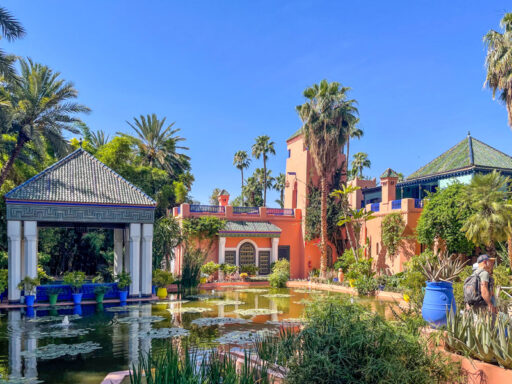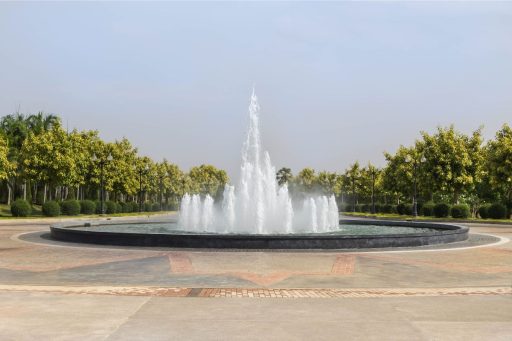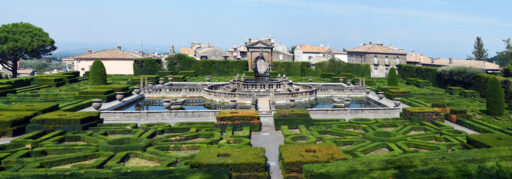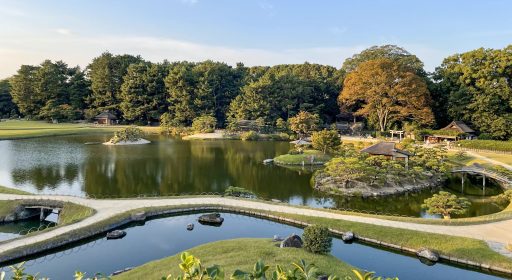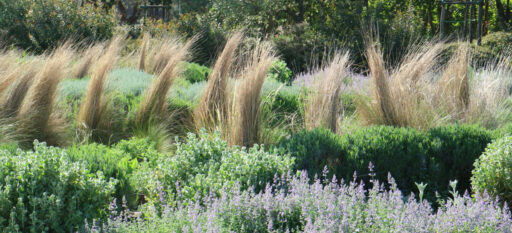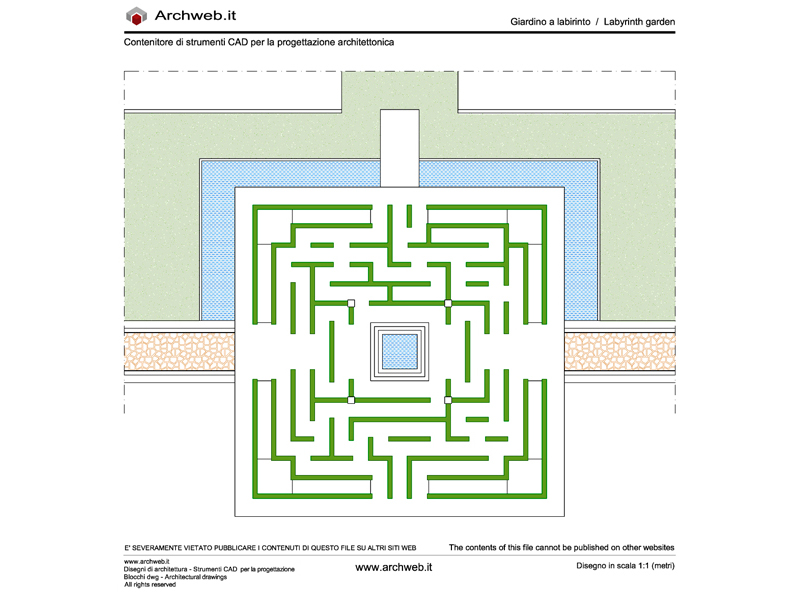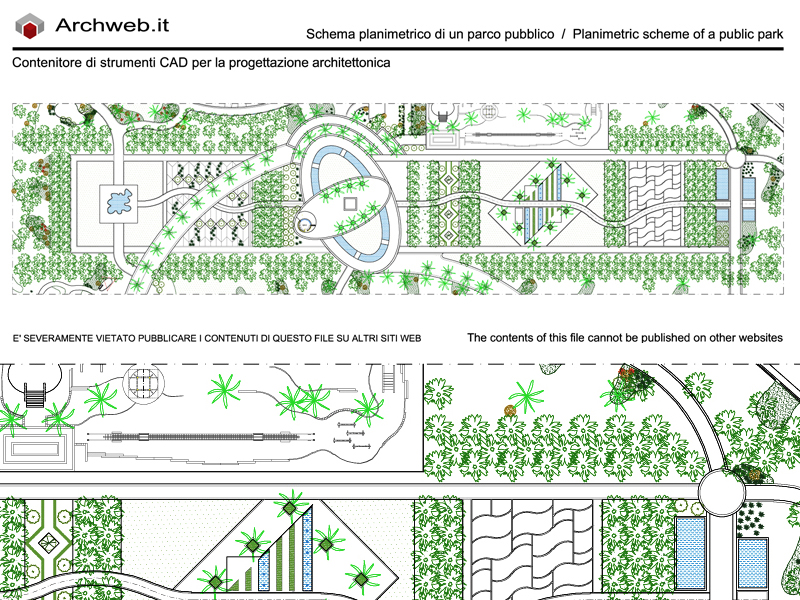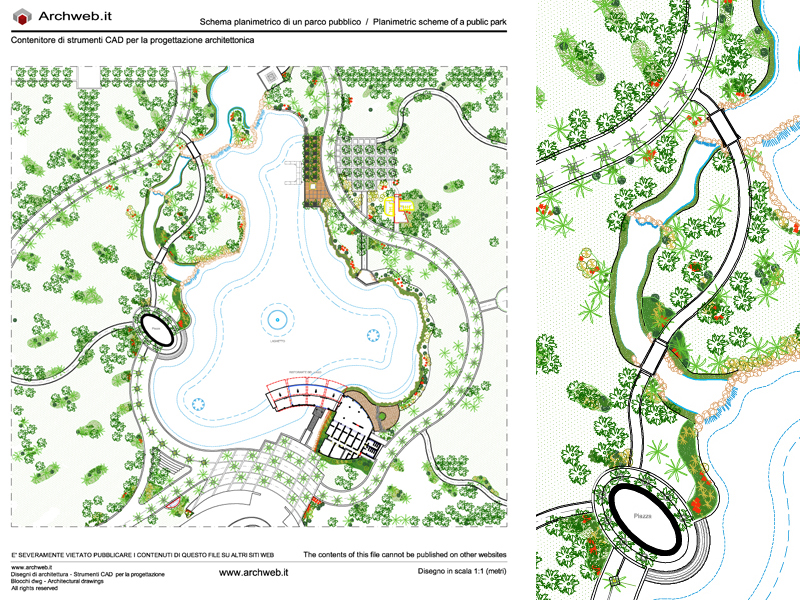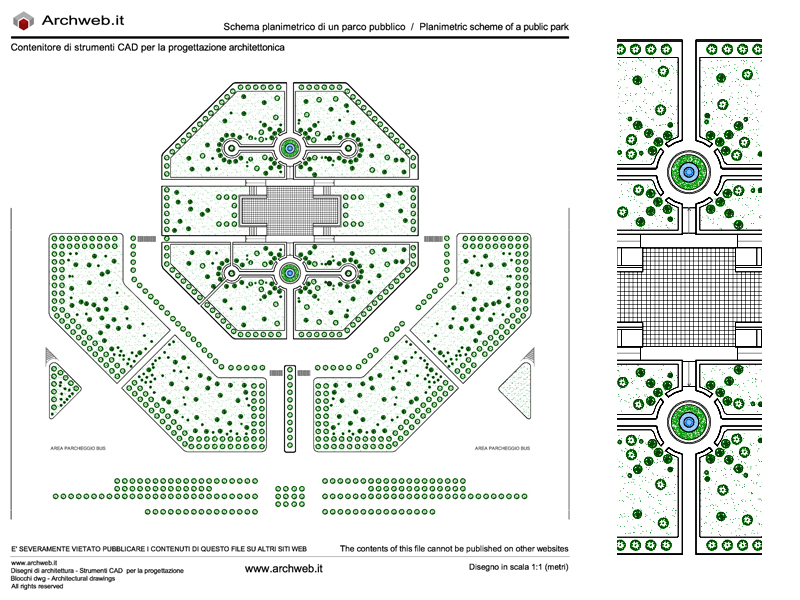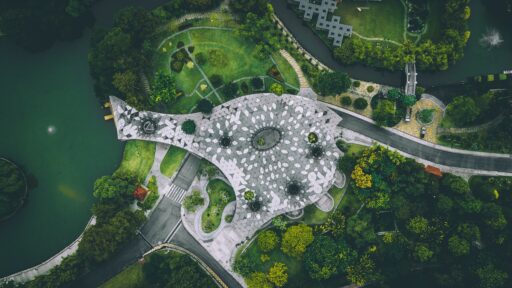Borges Labyrinth
Composed of boxwood hedges arranged in a precise shape, they reproduce the name ‘Borges’.
The ‘Borges Labyrinth’ is an installation dedicated to the famous Argentine writer Jorge Luis Borges1, located on the Island of San Giorgio Maggiore in Venice. Inaugurated in 2011 to commemorate the 25th anniversary of the writer's death, the labyrinth was designed by English architect Randoll Coate2.
This labyrinth is composed of boxwood hedges (3250 plants) arranged in a precise shape, reproducing the name ‘Borges’ and numerous symbols associated with his work, such as books, sticks and hourglasses. The labyrinth is inspired by the short story ‘The Garden of Forking Paths’, one of Borges' most famous works, in which the themes of time, infinity and the complexity of life's paths intertwine.
Boxwood (Buxus sempervirens), is an evergreen plant widely used in the creation of labyrinths due to its resistance, longevity and ability to maintain a compact and well-defined shape with pruning. Boxwood hedges make it possible to create intricate and well-defined paths, which in the case of the labyrinth dedicated to Borges reproduce symbols and letters inspired by the work and life of the great Argentine writer.
The location of the labyrinth, on the island that also houses the Giorgio Cini Foundation3, contributes to creating a contemplative and intellectual atmosphere, a perfect homage to the thought and writing of Borges, who often dealt with themes of mystery, enigma and the complexity of the universe.
If you are planning to visit Venice and you are an admirer of Borges, this installation could be an evocative and fascinating stop!
1. Jorge Luis Borges (1899-1986) was one of the most influential and celebrated writers of the 20th century, best known for his short stories, essays and poems exploring themes such as infinity, time, identity, the labyrinth and the universe as enigma. Born in Buenos Aires, Argentina, Borges is considered a central figure in Latin American and world literature.
2. Randoll Coate (1909-2005) was a British diplomat and world-renowned labyrinth designer. After serving in the British diplomatic service, he devoted himself full-time to the art of the labyrinth, creating works that combine elements of design, symbolism and philosophy. Coate is best known for his intricate labyrinths that incorporate hidden meanings and cultural, literary or mythological references.
His most famous collaboration was with Adrian Fisher, one of the most prolific contemporary maze designers. Together, Coate and Fisher have created a series of unique labyrinths around the world, including the famous ‘Labyrinth Borges’ on the island of San Giorgio Maggiore in Venice, designed in honour of the great Argentine writer Jorge Luis Borges.
Coate's work is characterised by the use of hidden symbols and shapes that tell a story or pay homage to historical figures or literary figures. His labyrinths are often seen as an intellectual and meditative experience, rather than simply an exercise in orientation.
In addition to the ‘Borges Maze’, Coate has designed numerous other mazes in various parts of the world, some of which include references to historical figures, artists or particular cultural themes.
3. The Giorgio Cini Foundation is an important cultural institution based on the Island of San Giorgio Maggiore in Venice. Founded in 1951 by Count Vittorio Cini in memory of his son Giorgio Cini, who tragically died in a plane crash in 1949, the foundation's purpose is the cultural promotion and redevelopment of the island's artistic and architectural heritage.
In addition to housing the Borges Labyrinth, the foundation is a nerve centre for Venetian culture, a meeting place for tradition and innovation, where scholars, artists and intellectuals discuss the major themes of contemporary culture.


































